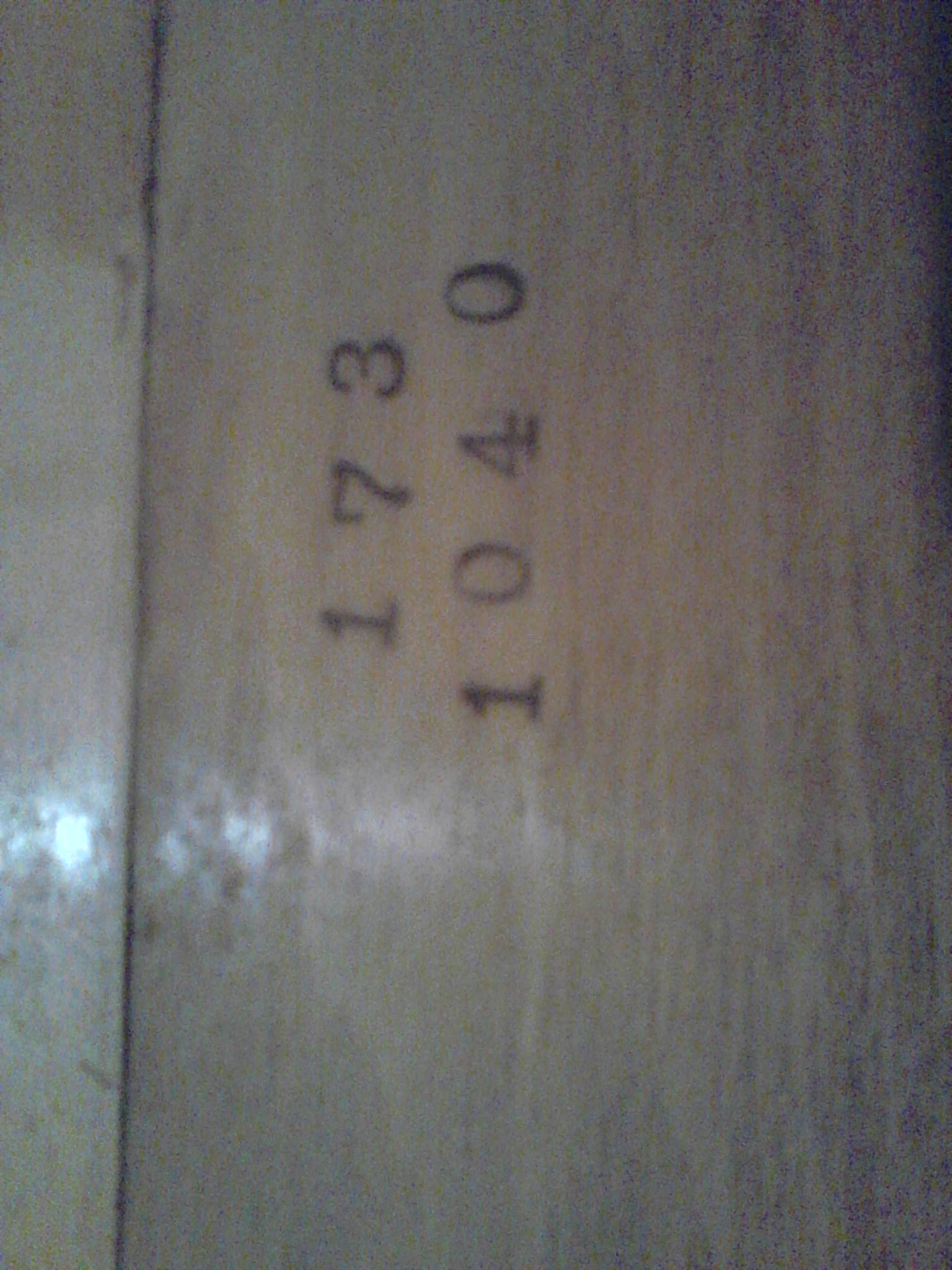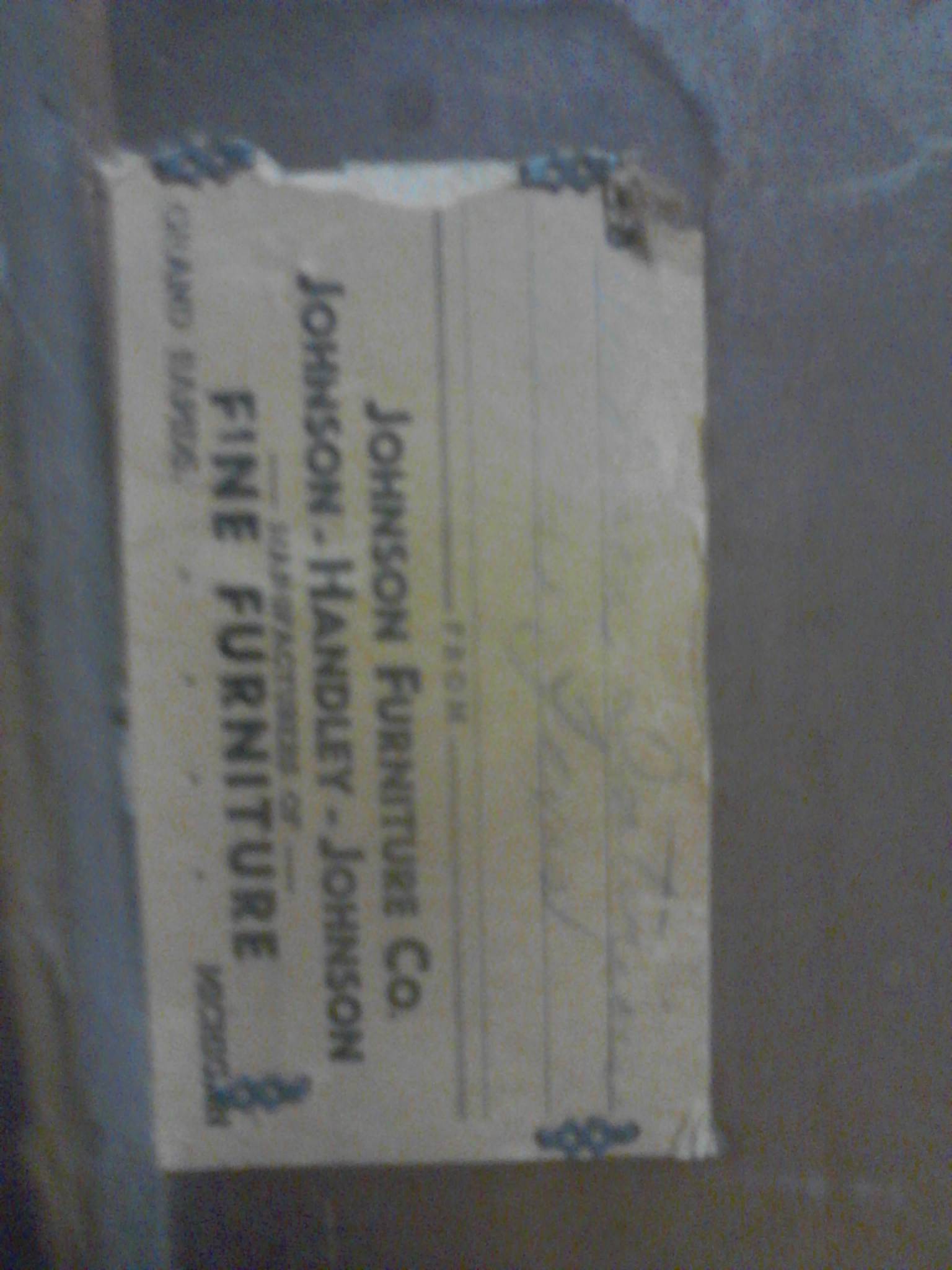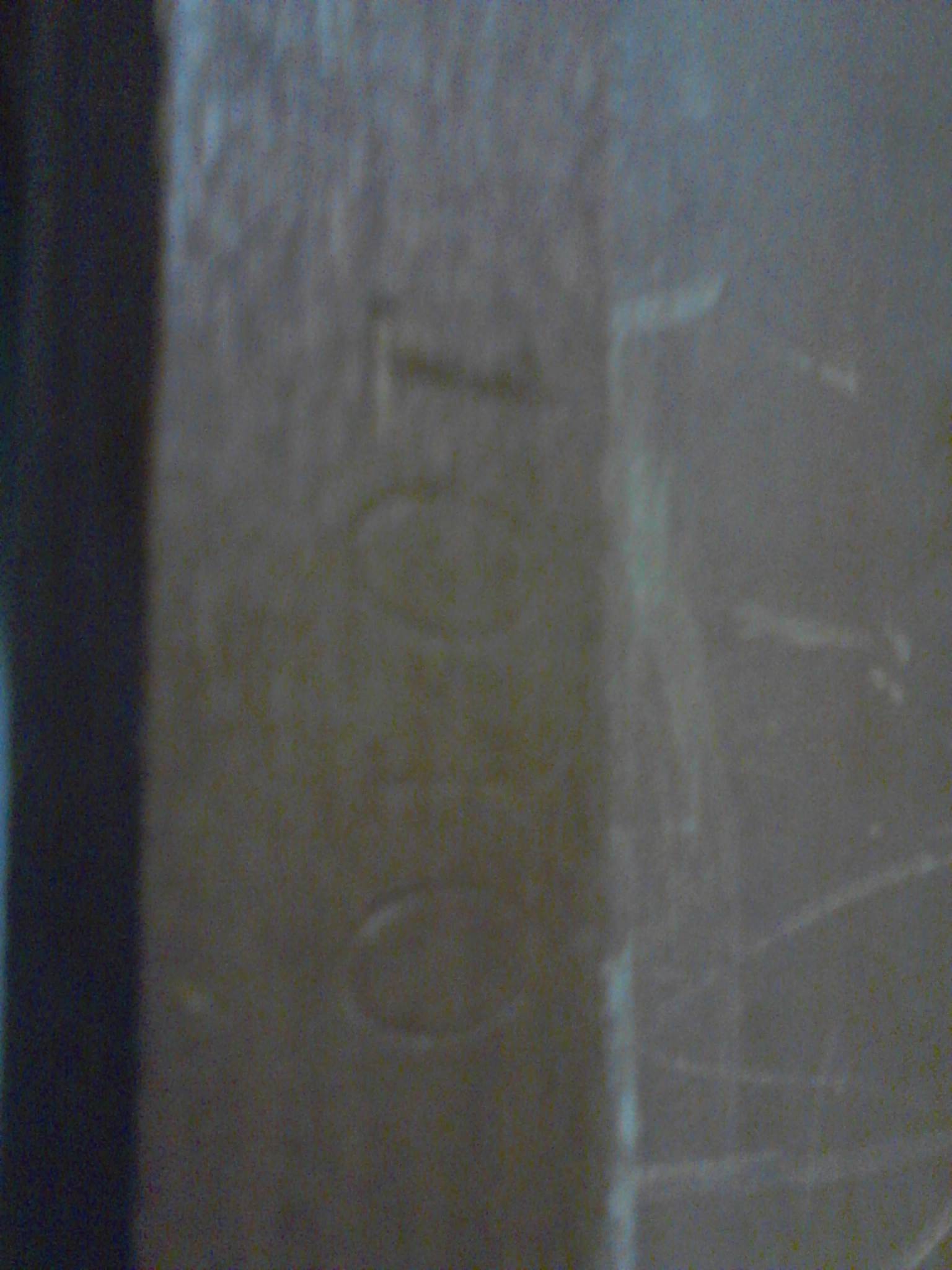Some information provided below were obtained through internet research.
I have a two (2) piece Bedroom set from apparently manufactured by Johnson Furniture Co. and designed by Paul Frankl sometime in the 1940s.
ITEM #1: DRESSER
Eight (8) drawers with what appears to be handles made of strong leather. Made out of solid wood possibly Mahogany. Imprinted in the interior of the drawer is what looks like a company logo with the words "Johnson Furniture Co. Grand Rapids Mich", with an image best described as (3) water droplets arranged in a manner that looks like the Ying and Yang symbol. Behind the dresser are the numbers "1041B-195" imprinted on upper left corner portion of the dresser. The number "91" is imprinted on the oppsite side of the previously noted numbers . Directly above the number "91" is a small number "4" etched into the wood.
ITEM #2: MATCHING BEDFRAME
Just like the Dresser, the bed is also made of the same material with patterns similar to the dresser.
The HEADBOARD has the numbers "1040-217" imprinted on the front bottom portion. The number 217 appears awkwardly misaligned from the number 1040. Beneath the number 217 is another imprint of a set of three numbers that is somewhat difficult to read as it appears to have been purposely scratched out as though it was due to an inventory error and replacing it with 217 as a correction.
Another distinguishing detail is the dash between the numbers 1040 and 217. Instead of a dash the number one "1" was used. The number one was is layed sideways (horizontally) instead of upright.
On the two side railings are the numbers "1040" engraved into the inner part of both boards towards the center.
On one of the bedframes, rests a small piece of yellowish brown rectangular shaped paper document that is slightly larger than the common business card. On the four corners of the paper are little staple like metals with artistic design used to bind the document onto the sideboard.
Appearing on the top end of the document is the word "TO" printed with a font closely resembling that of a typewriter or some writing equipment but obviously is not hand written. Following the "TO" are two words possibly a company name that appears to be handwritten in cursive above a straight line. The handwritten "company name" is barely legible due to some fading of the ink but to the best of my abitlity I have made out the words "Anderson" or "Andersen" and "Interiors". Immediately below is a second line and another set of two words hand written with same pentmanship and is also barely legible due fading. With close inspection I was able to come up with the words "M/callen Texas". The third and last line is blank. Below this line is the word "FROM" written with the same font as the word "TO" mentioned above and is situated on the center of the document with double lines extending from both sides of the word. Next are the words "Johnson Furniture Co." folllowed by "Johnson - Handley - Johnson written in bigger more bolder letters. Below this are the words "MANUFACTURERS OF" written in upper case but in smaller bold letters. Below this are the words "FINE FURNITURE" again written in big bold letters. Finally, on the bottom left corner of the document reads "GRAND RAPIDS" and to the right bottom corner "MICHIGAN". Both appearing to be smaller but slightly bigger than the words "MANUFACTUERERS OF".
My research brought me to the conclusion that this bedroom set was designed by Paul Frankl and manufactured by Johnson Furniture Co. sometime with the years 1940 to 1949. With extensive online research, I was unable to find a set such as this. All I found is the exact same dresser without the Bed Frame which you could access via URL link below. That particular dresser was appriased at $5,000 to $7,000 and fetched a whopping $16,000 at auction. Since I have the exact same dresser, I expect it to be somewhere within the 5 - $7,000 ball park more or less depending on condition but the fact that i have a matching Bed frame obviously would bring more value than a dresser alone. Something about the document binded to the bed's side board along with the distinguished scratching over a mistaken number and the substitution of the dash for a sideways number one arouses my curiosity. The document tells me that this set was probably given away as a gift. The distinctive scratching over numbers may be a cause of an itemizing or inventory error since the same set of numbers were used only repositioned. Does the distinctiveness of these markings and the attached document with handwritten letterings mean more value? Is the set I have somewhat unique from others you've seen? If so does that add value? Was it a gift to someone? If so, who is the recipient? Is the recipient someone famous? If so does that add more value? How much is my set worth?
I appreciate all expert responses and opinions.
http://www.ragoarts.com/lot/91310
Sincerely,
Vince Basa

















Re: Johnson Furniture Co. Dresser with matching Bed frame...
Hi guys! It's been a while since I've posted this and haven't gotten any info. Does anyone know anything about the items I have? Please share. I'd really appreciate it.
Re: Johnson Furniture Co. Dresser with matching Bed frame...
It appears that you have all the information you need. I find it strange that you would not contact Rago directly to confirm this (which I don't think this needs confirmation). Good find and good luck.